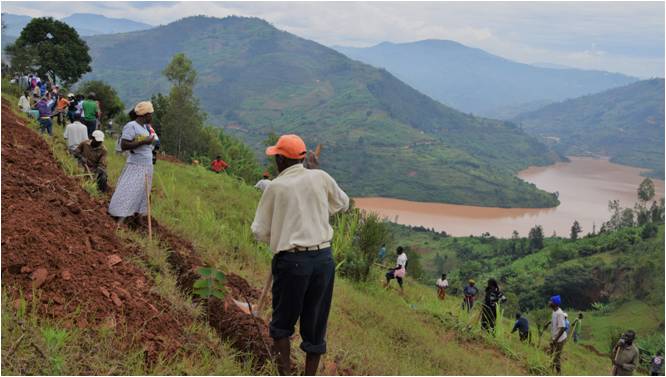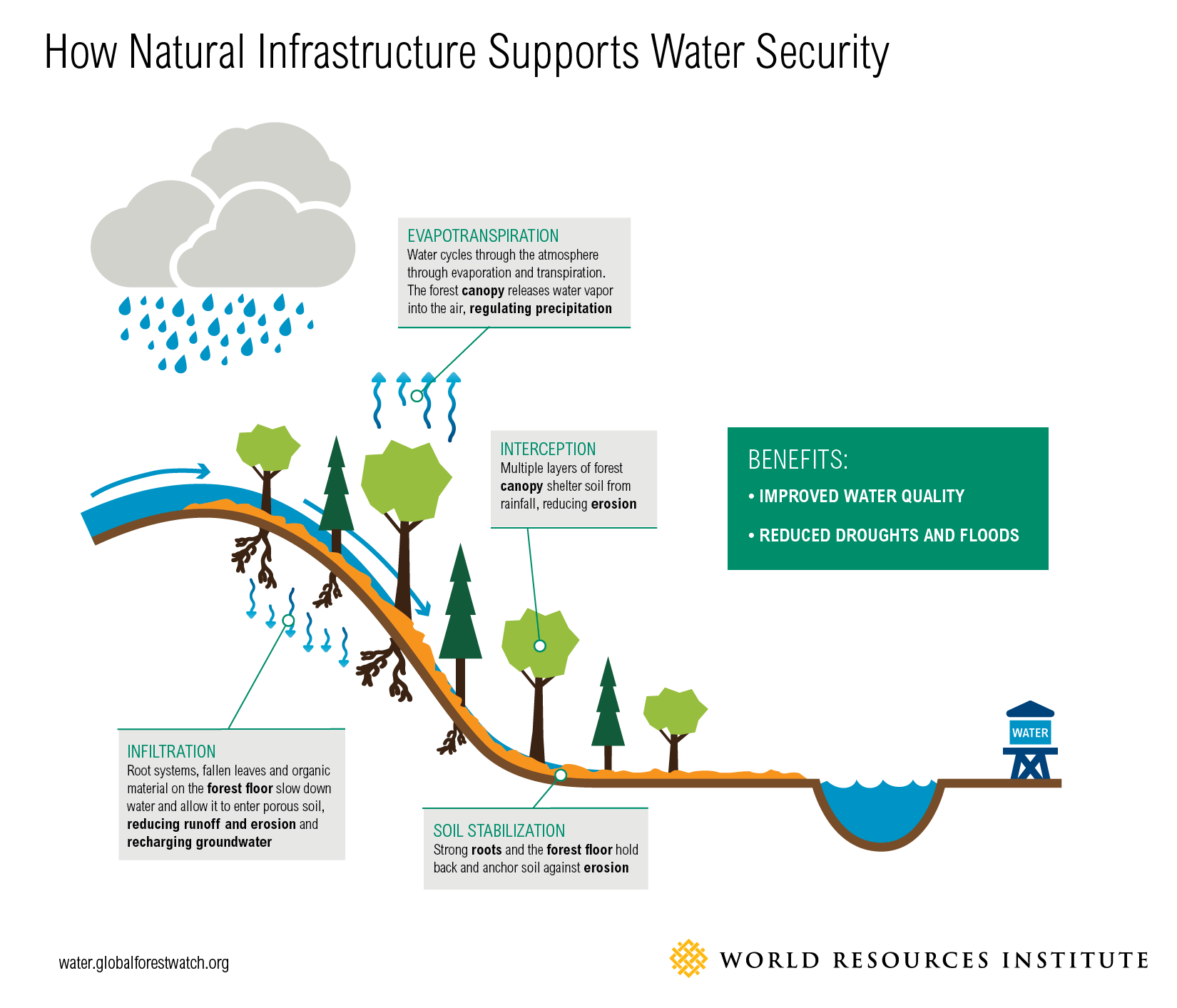Catchment restoration: investing in natural capital
Natural ecosystems as forest and wetlands are the natural capital of the catchment. Protected ecosystems are life-supporting systems providing a reliable flow of clean water and other ecosystem services as nature, clean air and biodiversity as well as protection against flooding and droughts. It is estimated that over 50% of GDP is nature based. Deforestation and degradation of the catchment constitute a serious threat for economic development of Rwanda.

Having a healthy catchment with an optimum level of water security is the basis for sustainable socio economic development. Catchment restoration contributes to water security by reducing situations of:
- Too little water (including droughts): Lack of sufficient water to meet demand for beneficial uses (households, agriculture, manufacturing, electricity and the environment);
- Too much water (including floods):
- Too polluted water: Lack of water of suitable quality for a particular purpose or use;
- Degradation of freshwater ecosystems: Undermining the resilience of freshwater ecosystems by exceeding the coping capacity of surface and groundwater bodies and their interactions.
The forested hillsides and the wetlands function like water towers in the catchment. A stewardship approach towards the water resources and nature will ensure that clean water will continue to flow to people, companies and other stakeholders in the catchment. If we take care of nature nature will take care of us. More and more companies see the relation between nature and the corporate survival and are greening their operations and looking beyond-the -fence for positive engagement with nature and the stakeholders in the community.

Experience with catchment restoration over the last years have shown that degraded areas can be rehabilitated. Water is coming back in the rivers, downstream flooding is less frequent and the productive capacity of the catchment goes up. Rwanda is showing the path with large scale commitments to restore degraded catchments.
Catchment restoration also called: Forest and landscape restoration or re-greening, consist of combined set of activities at field, farm and catchment level. Different methodologies exists to assess the issues, plan for improvement and organize action (eg. ROAM).
Catchment restoration includes the following interventions:
Catchment restoration delivers multiple economic benefits to farmers and communities. The people can make individual investments in protecting their own agricultural plots. Terracing, river protection and re-greening the environment can be done based on collective work as the Umuganda. Re-greening may be driven by many actors but large part is led by farmers who own the fields and private forests. To scale up re-greening six steps are recommended:
- identify and analyze existing restoration/re-greening successes
- build a grassroots movement based on the Farmer Field Schools for re-greening and mobilize Community Based Organizations and other local organizations.
- address policy and legal issues and improve enabling conditions for restoration
- develop and implement a communication strategy to create buy in from the stakeholders
- develop and strengthen agro-forestry value chains
- expand research activities to learn more about building healthy catchments
FURTHER READING:
REMA State of Environment and outlook Rwanda 2015
Common Land: A methodology for landscape restoration
Videos:
World Conservation Society short video: Ecosystem restoration Rwanda
Forest of Hope video: Experience landscape restoration
Wageningen University: Participatory farm design
IUCN-WRI ROAM videos
